Most people pretend they “know” how to go viral. The truth is, they don’t. Otherwise, they’d already be filthy rich.
Luckily, there’s no need to “know.” As Social Growth Engineers, we can almost scientifically bend the algorithm to our will.
It’s a brave new world for marketers. You ship content into an algorithm and get instant feedback. You can A/B/N test anything, whether you’re a one-person team or a billion-dollar company.
In practice, this comes down to three key steps:
- Studying the algorithm
- Practicing the algorithm
- Scaling on the algorithm
Studying the Algorithm
Research is the most important step. It helps in two ways when you dive into your niche. First, you can find viral “templates,” whether formats or hooks. Second, you can identify patterns.
How to research:
1. Fine-tune an account into your niche.
Create an account in, say, the “book reading” niche. Scroll for 15–30 minutes a day. Within a few days, the feed will only show relevant content. That means every time you scroll, you get inspiration and ideas.
Focus only on small accounts. Large accounts are not useful. What you want are small or mid-sized accounts that occasionally go viral. When you see an interesting video, check the account size before saving it.
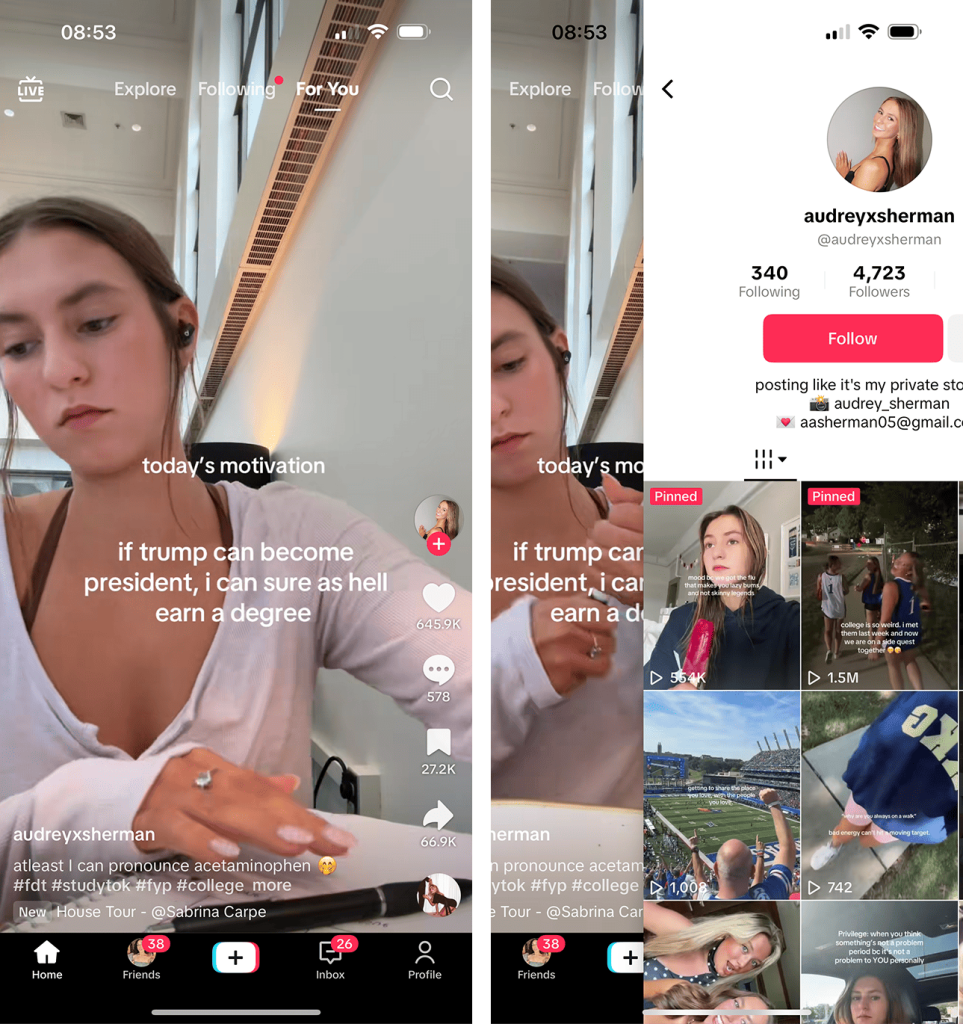
2. Find all your competitors running UGC accounts.
Save them, study their viral videos, and analyze how they showcase their products. This lets you shortcut the process—you’ll know what formats work and, more importantly, what doesn’t.
If you’re building an app for students, check accounts like Turbo, Studyfetch, Cluely, and others.
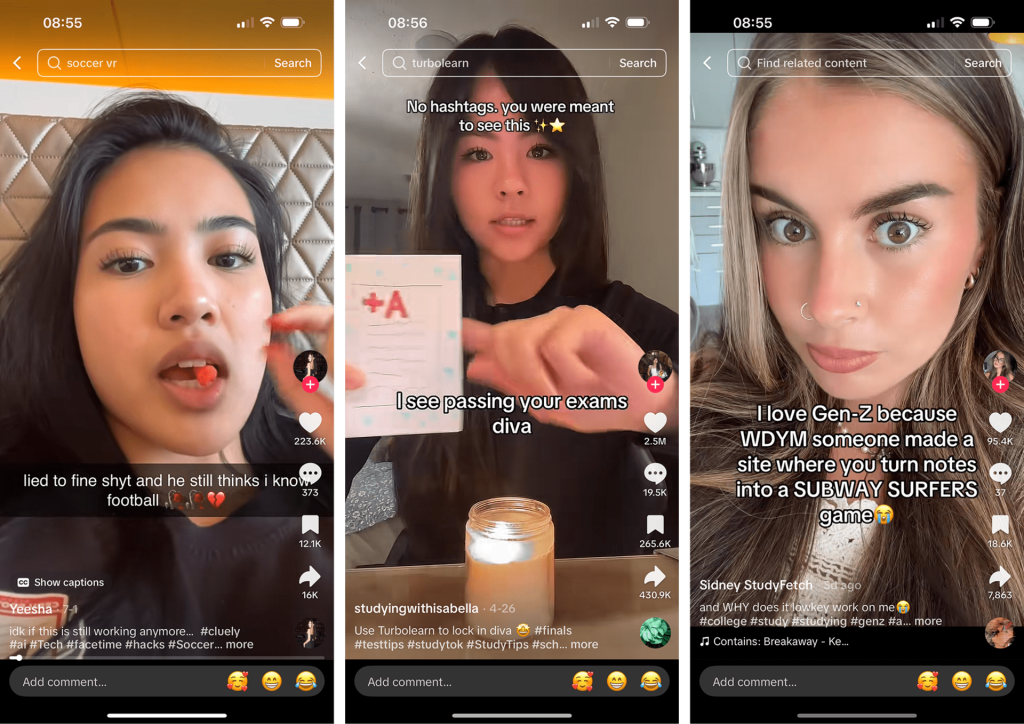
3. Find side accounts.
Cross-niche exploration leads to innovation and big views. If you combine a viral format or idea from one niche with another, you can create something new and potentially go mega-viral.
Practicing the Algorithm
Every time you post, you send a signal to the algorithm. It sends a signal back.
There’s little difference between having a massive budget and having none (except when it comes to high-production entertainment, which most people can’t afford anyway).
So start posting. Use CapCut and TikTok/Instagram to recreate the formats you’ve researched. Post daily. Post on two phones. The more you post, the more feedback you get.
Post 1,000 videos, and the results will come.
If you get shadow-banned, get a new phone. If your views stay low across multiple accounts, the problem is your content.
Think of it like product iteration, except at a much higher velocity.
If you’re VC-backed, you can hire interns to post daily, like Gigi did at the start:
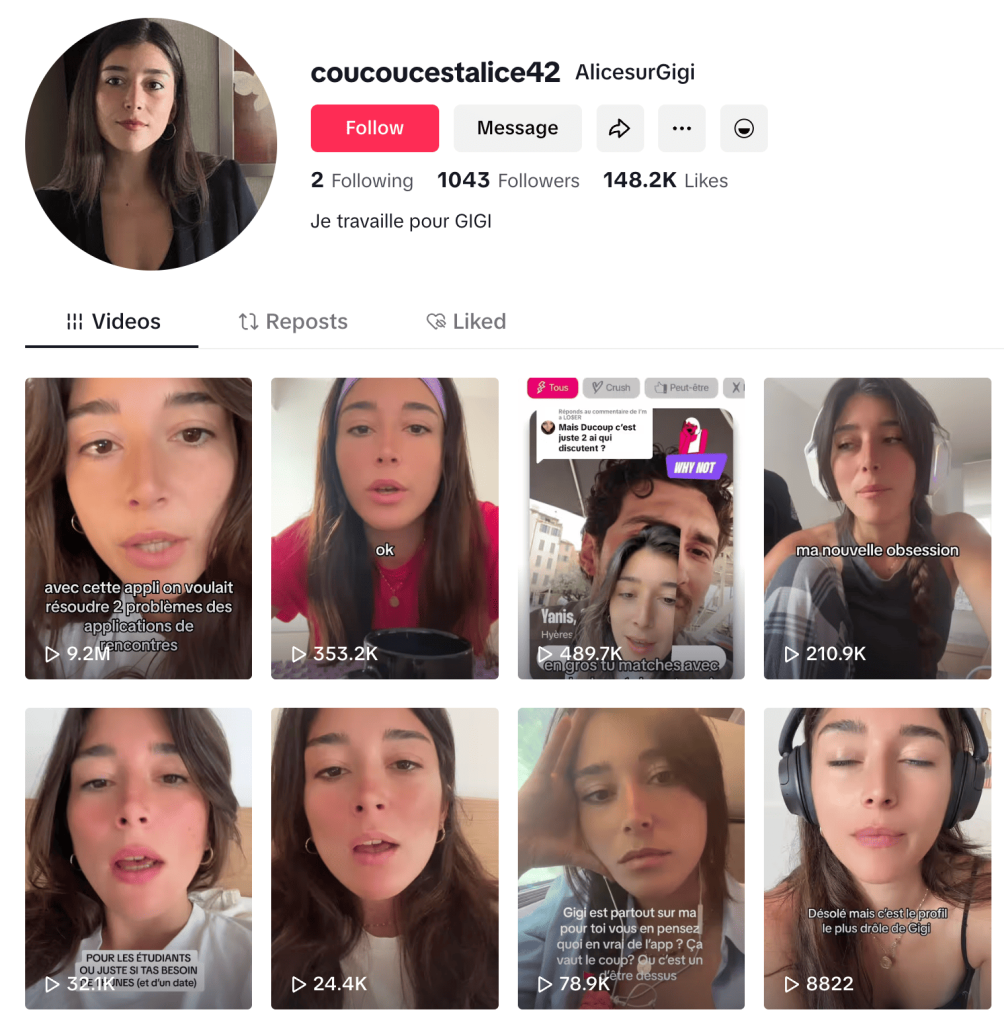
Or you can use external creators, though it’s always best to first build this skill in-house before scaling.
Indie creators are great examples of scrappy success. Check what Floor did at Panda Extract:
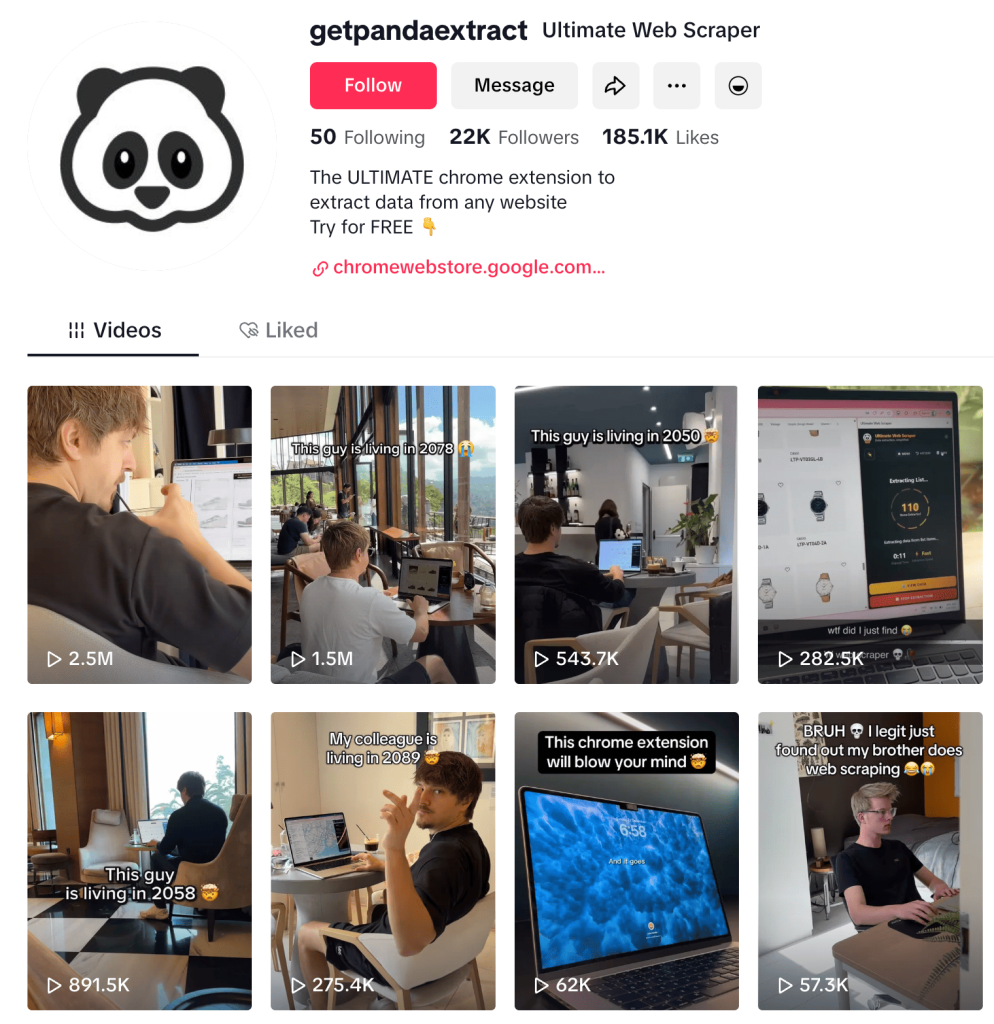
Or what these two Eastern European indie founders did with Writing Humanizer:
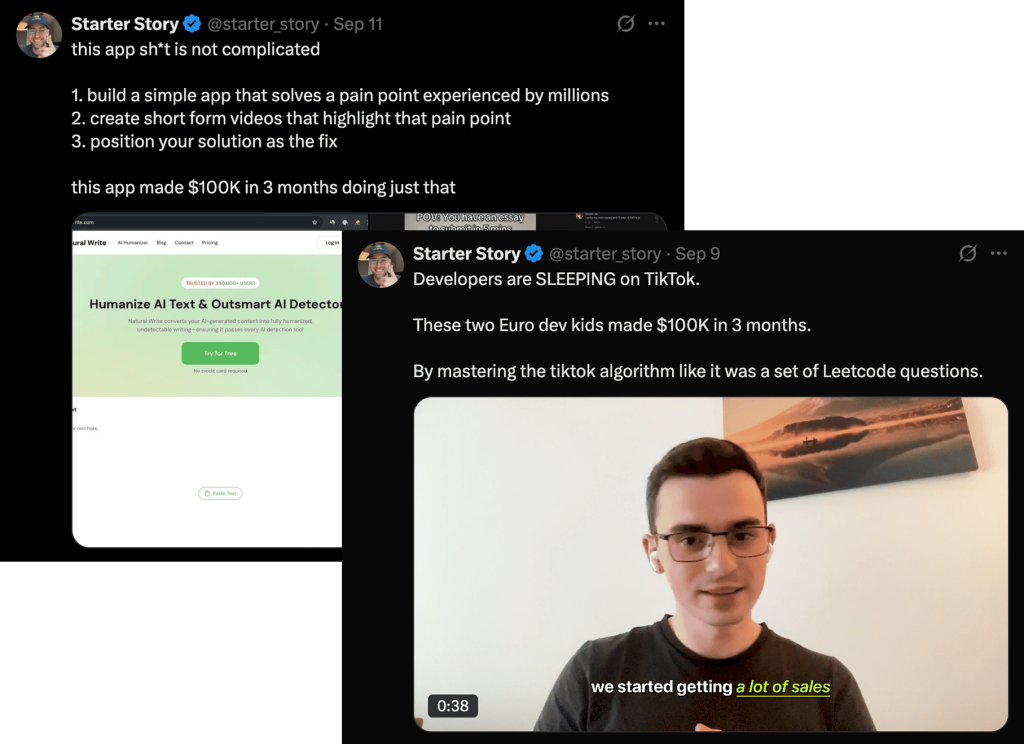
Scaling on the Algorithm
The final step is building scalable systems that generate hundreds of millions of views. These systems will be tailored to you, so don’t treat this as a step-by-step tutorial.
Examples:
Cray Cray’s faceless carousels
Cray Cray is a couple-questions app that’s quietly scaled through a massive faceless TikTok slideshow farm, generating 144M+ views across 20+ carousel formats and 26 accounts.

Airbuds wall-of-text teenager army
Airbuds, a music-sharing app, scaled to #2 on the App Store (just behind Spotify) through a massive TikTok teenager network. They pay them $125/week to only do one-shot wall-of-text videos. They post 100 to 150 videos a day.

TurboLearn scaled to 4M users and over 435M TikTok/Instagram views by engineering a high quality UGC empire of dozens of accounts. Some of those creators they sometimes pay up to $15,000/mo.

These three examples show different approaches. Each scales differently and monetizes differently. What works for one won’t necessarily work for another. That’s what makes each strategy defensible.
The most important part is to build repeatable, scalable systems that become a long-term acquisition machine.
It might be operationally hard, but that’s the price of avoiding the paid ads rat race and getting the best CPMs.
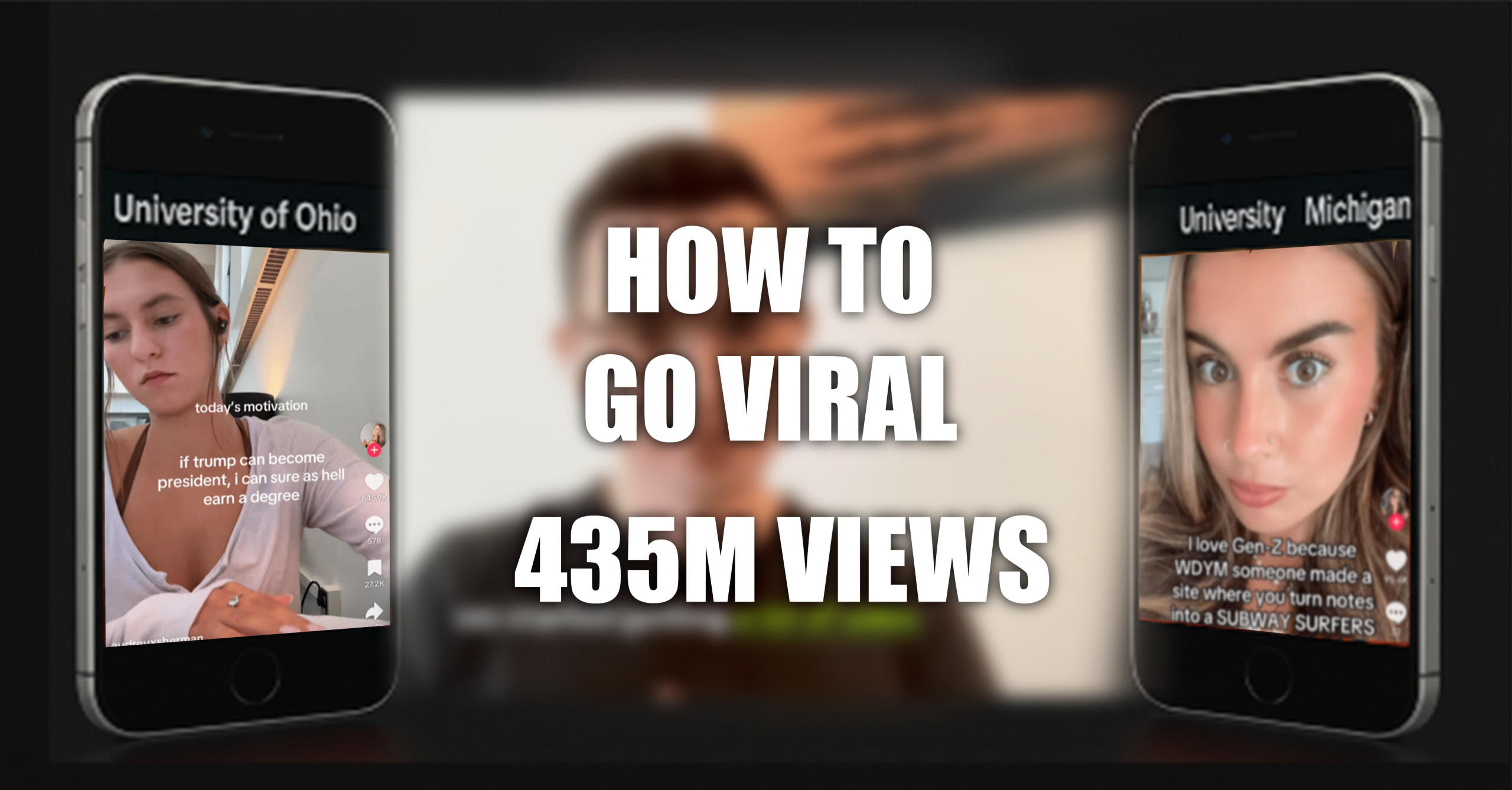
Leave a Reply